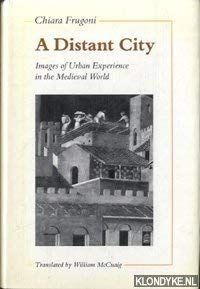
A Distant City Images of Urban Experience in the Medieval World
In a remarkable synthesis of iconography and social history, Chiara Frugoni addresses the changing concept of the city as revealed in visual and literary images throughout medieval Europe. By exploring the sentiments expressed through the image of the city, she traces how notions of civic identity became fused in the consciousness of the people and in the daily flow of their lives. An examination of cities depicted in early medieval illustrations suggests a widespread feeling of insecurity, often conveyed through networks of bare walls marking the boundary between order and chaos. Analyzing chronicles and other historical texts, Frugoni shows that the strong relationship between cities and their bishops led to a consciousness of the city as a meeting place rather than simply a place to live under protection. As the religious and protective roles of the city diminished during the high Middle Ages and early Italian Renaissance, a secular ideology emerged, finding its expression, for example, in the Lorenzetti fresco in Siena, a political manifesto offering a reassuring view of Good Government in the city.